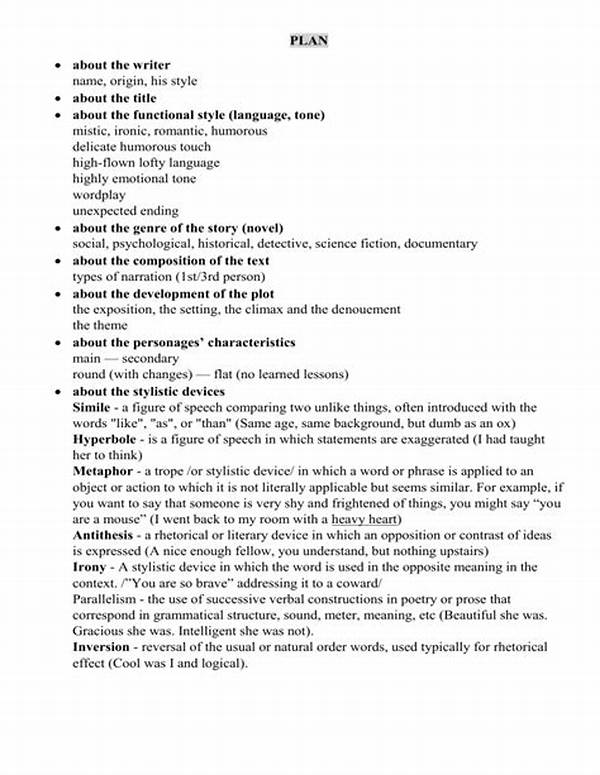The use of plot devices: contracts in romance is a well-regarded strategy in the genre of romantic storytelling. In literature and cinema, the motif of a contract, whether literal or metaphorical, serves as an effective catalyst for exploring the nuances of romantic relationships. Contracts in romance novels often encapsulate terms that challenge characters’ intentions, leading them to confront genuine emotions and commitments. Contracts can manifest in various forms, such as legal agreements, informal promises, or symbolic arrangements, each serving as a pivot for narrative development. This exploration delves into how these contracts are employed to initiate, sustain, and sometimes complicate romantic entanglements.
Read Now : Communication Strategies For Arranged Marriages
The Role of Contracts in Plot Development
In romantic narratives, plot devices such as contracts introduce compelling dynamics that compel characters to interact under predefined conditions, thereby enhancing the depth of character development. The presence of a contract typically introduces elements of obligation or resistance, which are central to the storyline’s progression. Such agreements are instrumental in establishing stakes and introducing conflict, encouraging characters to navigate through complex emotional landscapes. Contracts often precipitate a transformation in the characters, reflecting the shifts in their relationships as they confront personal ideals against the backdrop of imposed constraints.
1. Plot devices: contracts in romance function to drive the story forward by introducing tension as characters attempt to fulfill or challenge the agreement.
2. These plot devices create expectations that characters must navigate, often leading to unforeseen consequences that enrich the narrative.
3. Contracts in romance often facilitate a structured environment whereby characters’ emotions and loyalties are tested.
4. The ambiguity of contracts allows for fluid interpretations, thereby providing a fertile ground for character and plot development.
5. The resolution or dissolution of these contracts can serve as a climactic moment, where romantic resolutions are achieved.
Impact on Character Dynamics
The inclusion of contracts as plot devices in romance enables the author to craft intricate character arcs. The specified conditions of a contract often put characters in situations where they must reveal vulnerabilities or hidden desires. This exposure allows for authenticity in character interactions, generating empathy from audiences who witness the evolution of genuine connections. Furthermore, contracts can act as a mirror, reflecting societal expectations and personal beliefs, challenging characters to remain true to themselves within the artificial constructs of their agreements. Such dynamics often lead to characters reassessing their priorities, thereby fostering personal growth and contributing significantly to the narrative’s thematic depth.
Subplots and Tensions
1. Contracts introduce subplots that run parallel to the central romantic theme.
2. They often set the stage for secondary characters to influence the main storyline.
3. These subplots create tension by highlighting the disparity between contractual obligations and personal desires.
4. The narrative tension is amplified as characters struggle with duty versus emotional authenticity.
Read Now : High-value Historical Romance Book Sales
5. Contracts also frequently provide foreshadowing, hinting at potential resolutions or conflicts.
6. Secondary characters may exploit contracts to challenge or aid the protagonists.
7. The dissolution of a contract can serve as a pivotal moment of character liberation.
8. Romantic resolutions often arise from characters forging their path, breaking free from the contract.
9. Through contracts, authors explore cultural and ethical questions impacting relationships.
10. The resolution of such plots often leaves a lasting impact on both the characters and the audience.
Cultural and Historical Context
In examining plot devices: contracts in romance, one must consider the historical and cultural contexts that shape these narratives. Historically, contracts have been emblematic of societal norms and expectations, often constraining individual freedoms in favor of social acceptance. In many romantic stories, the contract is utilized to critique these societal pressures, serving as a metaphor for individuality versus conformity. Cultural variances also play a role, as different societies interpret contracts in uniquely nuanced ways, reflecting diverse views on love, duty, and freedom. The interplay between culture and personal agency within contracts enriches the romantic narrative, providing depth and realism to the unfolding story.
Significance in Modern Storytelling
The utilization of plot devices: contracts in romance resonates strongly in contemporary narratives due to its inherent ability to encapsulate conflict and resolution succinctly. Modern storytelling increasingly embraces themes of independence and self-discovery, making the contract a potent tool to highlight these elements. As characters navigate their contractual journeys, audiences are provided with complex views of commitment and autonomy, echoing the evolving discourse on relationships in real life. The continued popularity of these plot devices attests to their effectiveness in engaging audiences and providing a framework for vibrant and thought-provoking storytelling.
